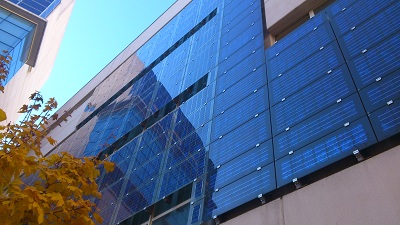One of the applications of Phase Change Materials is collecting solar energy from buildings with the ability to store such energy through solar collectors.
By using Phase Change Materials in these systems, a high volume of solar energy can be stored during daytime and used for heating and as warm water supply at night. Phase Change Materials in such systems are normally positioned layer by layer or spherically in thin chambers and then the heat transfer fluid is passed on without contact through chambers with the material.
 |
 |
The method used in these systems is the following: during the day, the collected energy will heat up the heat transfer fluid (usually water). Then the heated water will transfer its heat to the chambers filled with Phase Change Materials and it will collect the heat in the form of latent heat thus changing its phase from solid to liquid. During nights, cold water will replace the warm water in the system. Phase Change Materials then change phase the other way around (from solid to liquid) so the heat volume will be transferred to the cold water, heating the water and controlling the temperature.
Then, the heated water will be used for heating or as warm water supply in the building.
The melting point of this Phase Change Materials must stay between 50 and 90 Celsius degrees.
